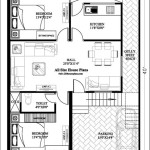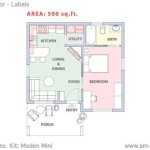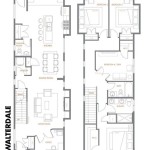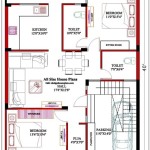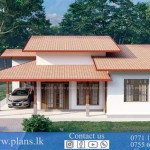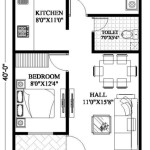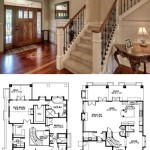Log Cabin Lake House Floor Plans: Designing Your Lakeside Retreat
The allure of a log cabin nestled beside a serene lake is undeniable. The rustic charm of natural wood combined with the tranquility of the waterfront creates an idyllic haven for relaxation and recreation. When planning such a retreat, the floor plan is paramount. It not only dictates the functionality of the space but also significantly impacts the overall aesthetic and livability of the lake house. Carefully considering various floor plan options, architectural styles, and specific needs allows the creation of a log cabin lake house that is both beautiful and practical.
Understanding Key Considerations for Log Cabin Lake House Design
Before delving into specific floor plan types, it's essential to acknowledge the key factors that influence the design process. These considerations ensure that the final structure is well-suited to its environment and the needs of its occupants. These factors include the size and shape of the property, local building codes and regulations, the intended use of the cabin (year-round residence, vacation home, or rental property), the climate, and the overall budget. Each of these plays a crucial role in determining the feasibility and ultimate success of the project.
The size and shape of the lakefront property directly impact the footprint and orientation of the log cabin. Sloping terrain, mature trees, and shoreline setbacks need to be carefully considered. Building codes often dictate maximum building heights, allowable impervious surface coverage, and specific requirements related to shoreline erosion control. Understanding these regulations early in the planning process is critical to avoid costly revisions later on.
The intended use of the log cabin also influences the design. A year-round residence requires robust insulation, a reliable heating system, and adequate storage space. A vacation home might prioritize maximizing entertaining space and minimizing maintenance requirements. A rental property would need to be designed for durability and ease of cleaning, with features that appeal to a broad range of potential renters. The climate dictates the type of insulation, window glazing, and roofing materials best suited for the region. In colder climates, a well-insulated log cabin with a wood-burning stove or fireplace is essential. In warmer climates, ample ventilation and shading are necessary to keep the interior cool. Finally, the budget constrains the size of the cabin, the quality of the materials, and the complexity of the design. Prioritizing essential features and exploring cost-effective building techniques helps manage the overall expenses.
Exploring Different Log Cabin Lake House Floor Plan Styles
Log cabin floor plans for lake houses come in a variety of styles, each offering unique advantages and disadvantages. Some common styles include the traditional one-story cabin, the two-story cabin with a loft, the A-frame cabin, and the contemporary open-concept cabin. The choice of style depends on personal preferences, budget limitations, and the specific characteristics of the site.
The traditional one-story log cabin is often the most cost-effective option. Its simple design minimizes construction costs and simplifies maintenance. These cabins typically feature a central living area, a small kitchen, one or two bedrooms, and a bathroom. The single-story layout is ideal for individuals with mobility limitations or those who prefer a more compact and intimate living space. This layout requires a larger footprint on the property, potentially impacting yard space or requiring more extensive site preparation if the property is sloping.
Two-story log cabins with a loft offer more living space without significantly increasing the footprint. The loft area can be used as a bedroom, office, or recreation area. This layout maximizes vertical space and often provides stunning views of the lake from the upper level. However, the loft area may have limited headroom and can be challenging to heat or cool effectively. The stairs leading to the loft must also be carefully designed to meet building code requirements.
A-frame log cabins are characterized by their distinctive triangular shape. This design is inherently strong and sheds snow and rain effectively. A-frame cabins often feature large windows at the front, providing panoramic views of the lake. However, the sloped walls can limit usable floor space, particularly on the upper levels. Furniture placement can also be challenging in an A-frame cabin.
Contemporary open-concept log cabins emphasize spaciousness and natural light. These cabins typically feature a large living area that flows seamlessly into the kitchen and dining area. Large windows and sliding glass doors connect the interior to the outdoors, creating a strong sense of connection to the surrounding landscape. Open-concept designs can be more expensive to build than traditional cabin layouts due to the need for larger structural beams and more complex HVAC systems.
Key Features to Consider in Your Log Cabin Lake House Floor Plan
Beyond the overall style of the floor plan, several key features contribute to the functionality and appeal of a log cabin lake house. These include the orientation of the cabin, the size and placement of windows, the design of the kitchen and bathrooms, the inclusion of outdoor living spaces, and the incorporation of storage solutions. Careful consideration of these features ensures that the cabin is both comfortable and practical.
The orientation of the cabin to the lake is crucial. The primary living areas should be oriented to maximize views of the water and to take advantage of natural light. In colder climates, orienting the cabin to the south can help to capture solar heat during the winter months. In warmer climates, orienting the cabin to the east or west can help to minimize exposure to the intense afternoon sun.
The size and placement of windows are equally important. Large windows provide stunning views and allow ample natural light to enter the cabin. However, they can also contribute to heat loss in the winter and heat gain in the summer. Selecting energy-efficient windows with appropriate glazing is essential. The placement of windows should also be carefully considered to provide privacy and to create cross-ventilation.
The design of the kitchen and bathrooms should be both functional and aesthetically pleasing. The kitchen should be equipped with modern appliances and ample counter space for food preparation. The bathrooms should be well-ventilated and feature durable, water-resistant materials. Consider incorporating rustic elements, such as wood countertops or stone tile, to enhance the cabin's overall aesthetic.
Outdoor living spaces are an integral part of the lake house experience. A covered porch or deck provides a comfortable space to relax and enjoy the views of the lake. A fire pit or outdoor fireplace can create a cozy gathering spot for evenings spent under the stars. Consider adding a screened-in porch to provide protection from insects. The size and location of the outdoor living spaces should be carefully planned to maximize their usability and to complement the overall design of the cabin.
Ample storage space is essential in any log cabin, particularly if it is used as a vacation home. Built-in shelves, closets, and drawers can help to keep the cabin organized and clutter-free. Consider adding a mudroom or entry area to provide a place to store coats, shoes, and other outdoor gear. A storage shed or garage can be used to store boats, kayaks, and other recreational equipment.
Ultimately, designing the ideal log cabin lake house floor plan is a deeply personal process. It requires careful consideration of individual needs, preferences, and the unique characteristics of the property. By exploring different floor plan styles, focusing on key features, and working with experienced architects and builders, it is possible to create a lakeside retreat that is both beautiful and functional, a place to create lasting memories with family and friends for years to come.

Appalachia Mountain A Frame Lake Or House Plan With Photos Plans Rustic

Cabin Floor Plan Log Home Plans House Homes

Lodge Log And Timber Floor Plans For Homes Lodges Cabins Bear Lake

Lodge Log And Timber Floor Plans For Homes Lodges Cabins Bear Lake

No Hay Texto Alternativo Automático Disponible Craftsman House Plans Lake Log Home Floor

Lakeview Natural Element Homes Log Love Put Bunk Beds In Loft Lake House Plans Cabin Floor

Golden Eagle Log And Timber Homes Home

Lake House Plan 3 Bedrms 2 Baths 1292 Sq Ft 167 1445

Plan 010h 0003 The House

Lake Cabin House Plan 2 Bedrms Baths 1333 Sq Ft 160 1011

